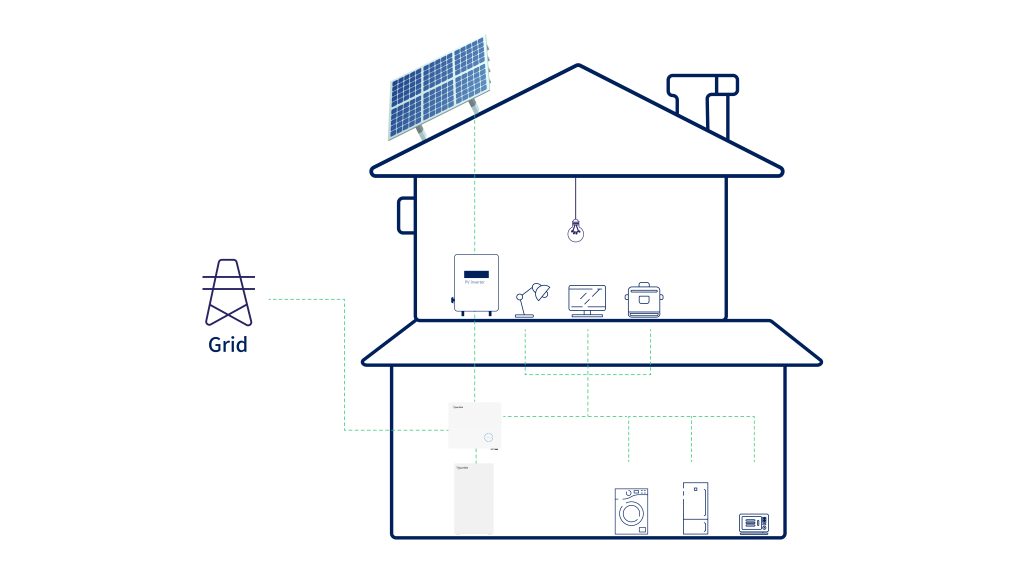Why homeowners worldwide are using solar-powered heat pumps to cut energy bills
Key takeaways
- Heat pumps draw energy from the air or the ground outside into your home, making them an efficient and sustainable way to heat your property.
- Using solar energy to power your heat pumps can make them even more sustainable.
- If you want to use solar energy to power your heat pump, you’ll need to make sure your solar system has a battery energy storage system, so that you can power your heat pump at night.
- Depending on whether you’re starting a solar system from scratch or converting an existing solar system for battery storage, you will need to choose between two different types of inverters: a battery inverter or a hybrid inverter.
- Benefits of combining solar power with a heat pump include reducing your carbon footprint, saving on energy costs, and taking advantage of government incentives.
Table of Contents
Nowadays, there is a huge range of options on offer for anyone wanting to cut their carbon footprint.
And more and more homeowners are thinking about investing in more than one kind of sustainable technology – and using them together to help them cut their energy use, emissions and spending even further.
Heat pumps and solar panels seem like a natural fit for this sort of approach. But is it possible to use heat pumps and solar panels together? And, if so, how
can you make sure you maximize the potential of both kinds of technology – and still keep your home snug and warm all through the winter?
What are heat pumps?
- Air source heat pumps draw heat from the air outside your home. If the air isn’t warm enough, it will use a little bit of energy to boost it to a higher temperature, so that it can warm up your home efficiently. Air source heat pumps can be divided into two sub-types: air-to-water heat pumps move heat into the water that runs through your radiators or underfloor heating systems. Air-to-air heat pumps work more like air conditioning, pushing warm air directly into your home.

- Ground source heat pumps draw heat from the ground by circulating liquid underground, using the earth’s natural warmth to heat it. This makes installing a ground source heat pump a little more complicated, which means they’re generally much more expensive.

- Hybrid heat pump systems combine either type of heat pump with a traditional boiler or gas-based heating system. The system monitors the temperature outside and, if it’s too cold to use the heat pump efficiently, switches to the traditional heating system to warm up your home.
How can you use solar energy to power your heat pump?
- Have high efficiency ratings
- Offer an extended warranty and technical support
- Use built-in monitoring to keep an eye on how your solar system is performing
How Hoymiles energy storage helps you stay warm all day (and night) long
There’s one big challenge with using solar energy to power your heat pump: solar panels can’t generate energy at night when you’re most likely to need to be using your heat pump.
That’s why many people who combine heat pumps with solar power choose to add some form of energy storage to their system. This means that your solar system can generate ‘extra’ energy during the day and then store it in a battery, to be used at night once the sun has gone down and the temperature has dropped.

Tip
If you’re based in Germany or a German-speaking country, you can even use your energy storage system to add an extra layer of efficiency In these regions, heat pumps that come with an ‘SG ready’ label are compatible with smart grid technology. If you have the right kind of inverter (such as a Hoymiles battery or hybrid inverter), you can set your heat pump to automatically start up whenever your solar system produces excess energy. This allows you to use as much of your solar energy as possible, as efficiently as possible. Here’s how to go about integrating energy storage into your solar system:
Adding energy storage to an existing solar system

Building a solar system with energy storage from scratch

What are the benefits of powering your heat pump with solar energy?
- Reduce your environmental impact
- Save on fuel costs
- Take advantage of government incentives
